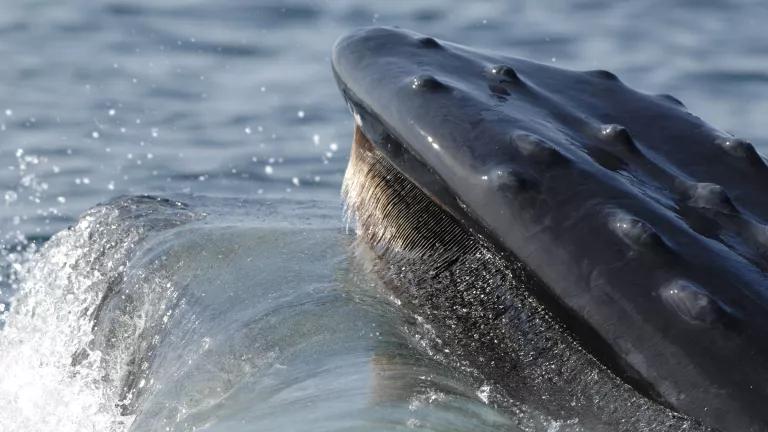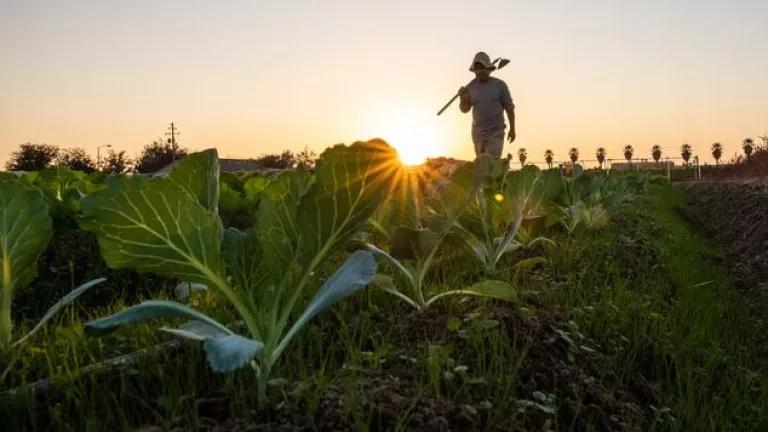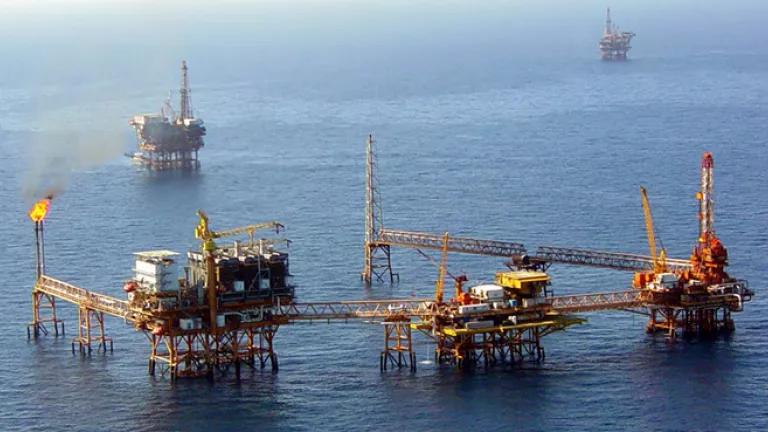I attended my first international climate conference last week, and it blew me away. International conferences around ocean issues number in the hundreds at most—this one attracted more than twenty thousand people, spread out in immense warehouse-type buildings covering an old airfield in Madrid. Meetings, roundtables, seminars, speeches, protests, rallies, all happening simultaneously, gave the place a monumental buzz.
The climate outcomes of the COP fell pathetically short by almost all measures. But in the ocean space, this COP did a lot to elevate understanding and awareness of the profound impacts wrought by climate change on the ocean. Dubbed the first “Blue COP,” the conference for the first time had a major focus on the interaction between the world’s climate and the ocean, and acknowledged the importance of both reducing emissions AND doing everything we can to promote climate resilience in the ocean.
For years, the world community has gathered at these UNFCCC Conference of the Parties meetings to address changes in our atmosphere and the growing need to do something about it, which culminated in approving the Paris Agreement on climate change in 2015.
This COP25 has made it clear, for the first time, that the ocean and climate are inextricably linked and that we cannot reduce the global threats from climate change without working to restore, preserve and protect a healthy ocean ecosystem, so we all can thrive.
This really struck home one evening when Ministers and others from Chile, Panama, Peru, Monaco, Germany, France, Sweden, Costa Rica, Belgium, the Seychelles and more gathered at a “Blue Leaders” event at COP25 to share their views on the ocean-climate links and discuss two major goals: protecting 30 percent of the oceans by 2030, or 30X30, and finalizing a robust new treaty in 2020 to dramatically improve conservation and management of the high seas, the international portion of the global ocean. The high seas constitute almost two-thirds of the world’s entire ocean and cover nearly half the surface of the planet. This huge zone of life is in desperate need of stronger management and conservation. After more than a decade of discussion, the new treaty is poised to get over the finish line in 2020, but doing so will require political commitment.
The “Blue Leaders” pledged to work together to establish larger and better managed marine protected areas, reduce greenhouse gas emissions, preserve ocean biodiversity, follow the science and demand governments take action, and to reach out to people around the world urging them to join the fight to safeguard our oceans.
“When you catch a wave, you’re stoked. I’m stoked,” Reece Pacheco, the executive director for WSL PURE, the World Surf League’s nonprofit focused on ocean conservation, told the gathering.
His group strongly supports 30x30 and a strong high seas treaty, and believes it’s imperative to build resilience in the ocean, which he called surfers’ home, office, playing field and church. He pledged to reach out to the global audience that follows the world’s surfing community and urge them to engage in the quest to protect the oceans.
IPCC Vice-Chair Hans-Otto Pörtner noted that the IPCC Special Report on the Ocean and the Cryosphere released in September, along with other increasingly alarming scientific reports, are helping the push for strengthening the Paris Agreement—which is focused on reducing harmful greenhouse gas emissions deep and fast enough to avoid a planetary climate disaster.
Ocean acidification, loss of marine life, and 75 percent of the world’s coral reefs will all be severe even if the world limits global warming to 1.5 degrees Celsius. But, he said, the drive to limit every bit of warming matters, every year matters and every effort to meet the climate challenge we face.
Costa Rica’s Minister of the Environment Carlos Manuel Rodriguez, told the group that, like Pacheco, he, too is a surfer, and has been for 42 years. He’s often surfed in one area whose waves he’s seen angry, happy, sad and wonderful, all of which he loves.
But Minister Rodriguez said that because of climate change, his beloved waves are not the same these days.
“The things I’ve seen the last 10 years really scare me,” he said. “The shape of the waves has changed. I see it in my wave, my shore. Human activity is changing this huge ecosystem. The world must begin to manage the oceans better and invest much more in protecting nature.”
Today, he said, the world invests .008 of GDP in ocean protection; that should rise to at least 1 percent by 2030, Rodriguez said. He’ll be back out surfing this Sunday, as most Sundays, and hoping the day will come soon that his waves, and all waves, will reflect a healthy, resilient ocean.
A government official from France said her country protects 24 percent of the oceans bordering France and its territories and is working toward 30 percent by 2030. They are working on marine protected areas far from France as well, in the northeast Atlantic and beyond.
“Our past is tied to the ocean,” she said. “We should realize our future is tied to the ocean.”
Sylvia Earle, the famed marine biologist and explorer, wrapped up the inspiring gathering on a high point. She said that the world certainly knows know how to take down the natural systems that keep us alive—look at what we’ve done to the air, water, land and ocean.
Dr. Earle, who has spent tens of thousands of hours in the ocean, said that the 30x30 goal of ocean protection should motivate people around the world. Once you know how altered, damaged and stressed the ocean is today you cannot unknow, Earle said.
“We need powerful determination. We should feel stoked,” she said. “Each of us has the ability to do something. What are we waiting for?”




